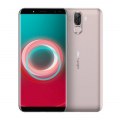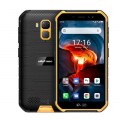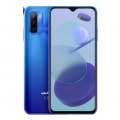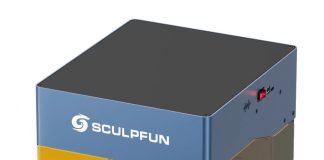Ulefone T1
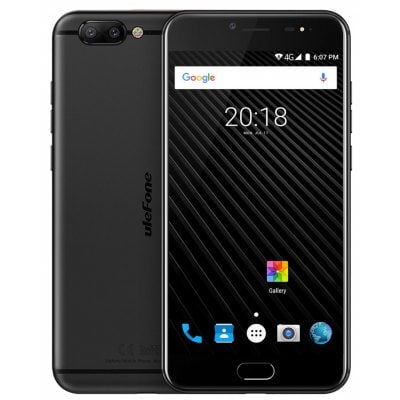
-
CPU: Helio P25 Octa Core 2.6GHz
-
RAM+ROM: 6GB RAM + 64GB ROM
-
OS: Android 7.0
-
Display: 5.5 inch
-
Battery: 3680mAh
Ulefone T1 4G Phablet
First things first. The Ulefone T1 is simply an aesthetic experience from the very first moment. The packaging is beautifully styled, the phone, especially in red, a perfectly matching beauty that is perfectly finished all around, a nice red cable for the USB-C charger is included, a microUSB to USB-C adapter, a slim small plastic case (as the only one in the design questionable) as protection for the back, an additional screen protector and on top of that one of these R There’s no shortage of anything.
As expected, the system is slim and clean. Android as it needs to be (7.0, but with Security Patch from June). 4.9 GB of 53.1 GB used, it says, 1.4GB of RAM of 5.7GB, there is really a lot of air up there. Google Apps won’t save you money, but it won’t be overdone, the Google Assistant runs smoothly. Extras are contained. There is DuraSpeed, for which you will probably have little use with the Helio P25 and various features, which are neatly summarized in the settings under “Smart Assistant”.
These are settings for the LED Notifications (three-colored), which call up screenshot or last used apps with three fingers, gestures to get out of opening apps from sleep mode, a screen recorder (practical!), an adjustable blue light filter called eyebrow mode, a setting for which apps are allowed to draw data under Wlan or mobile, and one for the on-screen buttons. Practical, straightforward, elegantly designed.
Go to the benchmarks! As expected, the Helio P25 is not an overperformer, but very fast. It seems to be quite well optimized compared to some other smartphones with the same processor. The single-core benchmark at Geekbench is, as expected, mediocre (835), but in multi-core, the strength (3898) lies here and you can reach flagships so slowly. PCMark places the T1 with a 4689 score near the Galaxy S6 Edge. The memory has a very fast write speed (137MB/s) and the Antutu-Score is more than decent with 64,000 to 68,000. In everyday life everything is very fluid, 3D games are also brave. Especially due to its 6GB RAM there is not much that the T1 would not be able to do easily.
The WiFi speed is pleasantly fast, the reception side of WiFi as well as for LTE, Bluetooth etc. very good. One of the main arguments – besides the design as I see it – for the T1 is its universal network readiness. LTE bands are actually not missed, the WiFi (802.11a/b/g/n) also works on 5Ghz, Bluetooth is decent with 4.1, the sensors do their job reliably, although the compass could be a little more precise from time to time.
There is a mono loudspeaker and it’s fine. Not a really great sound, but acceptable, definitely not just a thin nonsense, but of course no good bass. Midfield, we’d say. Under headphones the chip does a very good job and there is nothing to complain about. Not even in terms of voice quality. In general, this seems to have been a well-balanced design parameter on which great importance was attached. You really have to look for weaknesses.
The biggest thing I have found is the rather slow autofocus. He focuses well and reliably, but needs the 10th of a second longer than I would wish for. The camera software is very well designed, offers many possibilities and has a very intuitive interface. Features are Facebeauty, Bokeh, Pro Photo and Panorama. She can shoot serial pictures and does this reliably and there is a live-photo-setting, which I don’t really know. Each photo provides access to color saturation, contrast, ISO, white balance, exposure, and the zoom can be turned up to 5 times on a “wheel” or changed to touch. All quite practical, all very fast in the reaction time.
The dual camera with 16/5 megapixels (a Samsung S5K3P3 sensor with f/2.0, the same as in Redmi Note 3) is not, I suspect, responsible for the blur effect. It seems to be implemented in the software. But for what, then, I suppose it measures depth and allows you to concentrate the sharpness well (beyond the blurs). And the camera is not lacking in sharpness, sometimes you have the feeling that it is a bit overdrawn. The strength is clearly in the large colour contrasts, where it convinces with a very good colour rendition of good stability with a strong light-dark contrast. The sky remains sky-blue in many shades, the green has a rich impression, competing colours very concise. There’s supposed to be car HDR, but I’m not sure it’s going to be used. I haven’t noticed a thing. According to the settings, both 16:9 and 4:3 images are in 16MP. I must say, I prefer the former. Above all, because the light curvature of the lens always gives the images in 16:9 a very special drama, because the camera is a little wide angle. It could be criticised as a distortion, but as marginal as it is, I see it more as a character and an advantage. When using Blur, one should be very careful, because it can (although adjustable) exaggerate quickly. Yes, it can have a dramatic effect here too, but it also quickly becomes a drama and I don’t see anything that cannot be regulated with software on the computer just like that or better. The trigger is not the fastest, but it should be enough in everyday life. Auto-Scene-Detection works quite reliably, the Zero-Lag-Shutter (for a bit faster triggering) also, we did not observe a notorious blur – as with some other smartphone cameras with this feature.
The zoom can be used up to 3 times, but that’s all it takes. And depending on the lighting conditions, focusing on a detail is no longer so easy for the camera. The zoom is not brilliant, but you don’t have to shy away from it – as with so many cameras – even if it’s not an optical zoom and you only gain something when you feel it.
The high quality of the camera is certainly in wide dramatic scenes in daylight, where especially in strong sunlight it is darkened a little bit in the camera. The Pro-Screen in the camera software helps here, which can bring a lot of warmth to the pictures even with pale artificial light photos by a fast grip to the white balance. All in all, I would say: the camera is for something more than the good snapshot. You can get really impressive pictures that already work without any after-filtering. And thanks to its flexibility, it also gives you the opportunity to be more creative when shooting photos.
It was astonishing for me that the camera of the T1 continued to behave very well into the twilight. If there is a problem with light at all, it is that the T1 tends to get too much brightness in the dark. Something that can be easily corrected with the Pro-setting. Sure, the noise becomes noticeably stronger, but often enough the images remain impressive and retain their strength in the colours. Especially in urban night scenes you can expect a lot from the T1. Maybe this is also the task of the second camera to get more out of it, because the pictures are clearly much better than we are used to from this sensor. However, it is not always easy for the T1 to find the right focus in the dark.
Videos are also rich in detail and the lack of image stabilization doesn’t cause images to jerk too fast. However, you shouldn’t be too fast in your movements, nor should you want to record videos while walking, because then of course you will notice this already strongly. There are no special features for the 1080p video camera, but you can stop and continue recording videos.
All in all, it is a very good camera that fits the aesthetically perfect impression of the T1 very well. However, the software could still do a little bit better in the detection of light conditions, presumably also in the focus speed.
Yes, of course you can say that the Ulefone T1 doesn’t have a particularly prominent feature, which is often available for marketing reasons, but that’s an advantage here. From the rather classic design with the two antenna strips on the back, to the large, but not endlessly capacity-equipped battery (but still impressive 3680mAh) up to the processor or the camera, both of which do not quite reach flagship ships, everything is not only above average, but it also fits together so well, nothing has been saved and the T1 comes with a universal network coverage and an integrated power supply.
SPECS
Product Details
| Features |
Display: 5.5 inch, 1920 x 1080 Pixel screen CPU: Helio P25 Octa Core 2.6GHz System: Android 7.0 RAM + ROM: 6GB RAM + 64GB ROM Camera: 8.0MP ( Interpolated to 13.0MP ) front camera + 16.0MP + 5.0MP back cameras Sensor: Gravity Sensor, Proximity Sensor, Light Sensor, Touch Sensor SIM Card: dual SIM dual standby. Nano + Nano SIM Feature: GPSA / GPS Bluetooth: 4.1 Network: 2G: GSM 850/900/1800/1900MHz CDMA 2000 3G: WCDMA 850/900/1700/1900/2100MHz 4G: FDD-LTE B1/B2/B3/B4/B5/B7/B8/B12/B17/B19/B20 TD-LTE B38/B39/B40/B41 |
| Specification |
Brand: Ulefone Type: 4G Phablet OS: Android 7.0 Service Provider: Unlocked Language: Indonesian, Malay, Catalan, Czech, Danish, German, Estonian, English, Spanish, Filipino, French, Croatian, Italian, Latvian, Lithuanian, Hungarian, Dutch, Norwegian, Polish, Portuguese, Romanian, Slovak, Finnish, Swedish, Vietnamese, Greek, Turkish, Bulgarian, Russian, Serb, Ukrainian, Armenian, Hebrew, Urdu, Arabic, Persian, Hindi, Bengali, Thai, Korean, Burmese, Japanese, Simplified Chinese, Traditional Chinese SIM Card Slot: Dual SIM,Dual Standby SIM Card Type: Nano SIM Card CPU: Helio P25 Cores: 2.6GHz,Octa Core RAM: 6GB ROM: 64GB External Memory: TF card up to 256GB Wireless Connectivity: 3G,4G,Bluetooth,GPS,WiFi WIFI: 802.11a/b/g/n wireless internet Network type: CDMA,FDD-LTE,GSM,TDD-LTE,WCDMA 2G: GSM 1800MHz,GSM 1900MHz,GSM 850MHz,GSM 900MHz CDMA: CDMA 2000 3G: WCDMA B1 2100MHz,WCDMA B2 1900MHz,WCDMA B4 1700MHz,WCDMA B5 850MHz,WCDMA B8 900MHz 4G LTE: FDD B1 2100MHz,FDD B12 700MHz,FDD B17 700MHz,FDD B19 800MHz,FDD B2 1900MHz,FDD B20 800MHz,FDD B3 1800MHz,FDD B4 1700MHz,FDD B5 850MHz,FDD B7 2600MHz,FDD B8 900MHz,TDD B38 2600MHz,TDD B39 1900MHz,TDD B40 2300MHz,TDD B41 2500MHz Screen type: IPS Screen size: 5.5 inch Screen resolution: 1920 x 1080 (FHD) Camera type: Triple cameras Back-camera: 16.0MP + 5.0MP Front camera: 8.0MP ( Interpolated to 13.0MP ) Video recording: Yes Picture format: BMP,GIF,JPEG,JPG,PNG Music format: AAC,AMR,FLAC,MP3,WAV Video format: 3GP,H.264,MPEG4,WMV I/O Interface: 2 x Nano SIM Slot,Micophone,Speaker,TF/Micro SD Card Slot,Type-C Bluetooth Version: V4.1 Sensor: Ambient Light Sensor,Gravity Sensor,Proximity Sensor Google Play Store: Yes Additional Features: 3G,4G,Alarm,Bluetooth,Browser,Calculator,Calendar,Fingerprint recognition,Fingerprint Unlocking,GPS,MP3,MP4,WiFi Battery Capacity (mAh): 3680mAh Battery Type: Non-removable Product size: 15.50 x 7.69 x 0.85 cm / 6.1 x 3.03 x 0.33 inches Package size: 19.00 x 18.80 x 3.40 cm / 7.48 x 7.4 x 1.34 inches Product weight: 0.1810 kg Package weight: 0.5860 kg |
REVIEWS
Disclaimer Note
Ratings are based on objective reviews from our users.


